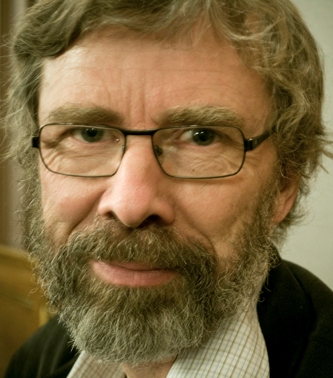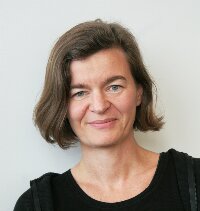Sociology: a women's subject with low-status
According to the science hierarchy, sociology has low status whereas mathematics has high status. Both this hierarchy and the peer-review process have characteristics that structurally downgrade women’s position in academia.

“There is a hierarchy of the sciences in academia, and it is quite ingrained. It doesn’t come from priorities elsewhere in society, and it corresponds with male priorities,” said Knut Liestøl, a professor of informatics at the University of Oslo, in his lecture on hierarchies, quality and gender in academia held during the Science Year 2011 conference sponsored by the Ministry of Education and Research.
Math on top in 1830
“My first example is classical, and it originates with the French philosopher Auguste Comte,” said Liestøl. Comte devised his hierarchy of the sciences around 1803. He placed mathematics at the top, followed by astrophysics, physics, chemistry, biology and sociology. The hierarchical ranking reflected the subject’s level of development according to Comte, but it did not show the order of importance.
“In fact, Comte said that sociology was the most important science,” said Liestøl.
Math on top in 2003
Liestøl asked whether this classical hierarchy has any relevance today. To find the answer, he reviewed the Research Council of Norway’s first grant allocations under the Outstanding Young Investigators’ (YFF) scheme in 2003.
”I took the number of grant recipients and divided it by the number of doctoral research fellows in the same subject areas at Norwegian universities,” says Liestøl. When he compared the numbers to Comte’s traditional hierarchy from 1830, he found an almost perfect correspondence. The subjects ranked highest by Comte also came out on top for YFF grants.
“Mathematics, astrophysics and physics had a quotient of three to four percent, and chemistry two percent. Then there is a decline. Biology got very little and sociology none,” said Liestøl.
Women at the bottom
“Where do women fall in this hierarchy?” asked Liestøl.
“I looked at the percentage of women in permanent positions at Norwegian universities, and found a ‘perfect’ ranking in relation to Comte’s hierarchy. There are fewest women at the top, and then there is a steady increase towards the bottom of the hierarchy where most of the women fall,” said Liestøl, as he showed the percentage distribution of female employees in the various subjects – mathematics: 12 percent, astrophysics/physics: 14 percent, chemistry: 18 percent, biology: 20 percent and sociology: 41 percent.
Surgery versus geriatrics
Liestøl also took an example from medicine, based on a study by Dag Album of the Department of Sociology and Human Geography at the University of Oslo. Album conducted his initial study in 1991, and followed it up in 2007 with a study of a hierarchy of “prestigious diseases”. He based his research on interviews with senior specialists, general practitioners and advanced medical students.
“Album found that certain medical fields were consistently ranked at the top. The highest was surgery. At the bottom was geriatrics,” said Liestøl.
Album also ranked specific diseases according to their level of prestige. In particular, diseases such as heart attack, leukaemia and brain tumours are the most prestigious, while conditions such as fibromyalgia and anxiety disorder have the lowest status.
Where society needs strength
“What is rather important is that the three groups of respondents gave very similar rankings,” said Liestøl. “In addition, there are pronounced differences in the total number of points at the top and bottom, so this is definitely a well-ingrained hierarchy.”
“Another point is to observe where there is the most contact with patients. Not surprisingly, the study shows an increasing contact with patients the further down we go in the hierarchy,” said Liestøl.
Liestøl also referred to a study by Inge Henningsen (1999) of the University of Copenhagen in which she compared prestige and the percentage of women in the individual medical fields. Like the other studies, she found the fewest women at the top of the hierarchy (about 20 percent) and the majority of women at the bottom (50 percent or more).
“Women are there where society needs strength, but not where the prestige is,” commented Liestøl.
Inequalities such as Liestøl mentions can also reduce the quality of research.
Assessment of quality
“Kåre Hagen, a political scientist and director of NOVA, defines high quality as what good researchers call good quality. A good researcher is one who delivers good quality,” said Liestøl.
Peer review is a process that assesses manuscripts prior to publication or research conducted at an institution. The aim is to ensure good quality in research and the dissemination of findings. But as Liestøl points out, the peer review process, with its conservative foundation, also has flaws and weaknesses. Liv Langfeldt of the Nordic Institute for Studies in Innovation, Research and Education (NIFU) has studied the peer review process and tried to document its weaknesses. In her lecture, Langfeldt discussed several of the limitations and biases of referee panels’ evaluation of research.
Fluid assessment criteria
“The peer review process is supposed to assess whether the projects are original, whether they are feasible and whether their findings can be relied on,” said Langfeldt.
“Studies show that there is a common set of criteria for good research,” Langfeldt continued, “But these criteria are interpreted and used differently by the various referees. This is why they often make different assessments of the same research. This weakness in the assessments is intensified when the referees don’t interact much with each other when drawing conclusions about scientific quality,” said Langfeldt.

“Power structures can also be protected by ‘scientific bias’. Precautions are taken to keep personal interests from playing a role in the assessments. By the same token, it is far more difficult to ensure that assessments are not dominated by the referees’ scientific perspective and the established schools of thought. Unconventional and pioneering research does not come out on top,” said Langfeldt.
Liestøl also touched on this point.
“There is a danger in believing that we evaluate others’ research on quality alone,” said Liestøl.
More research
When the floor was opened for questions, Lars Walløe, a professor at the Institute of Basic Medical Sciences at the University of Oslo and former head of the Norwegian Academy of Science and Letters, raised an important issue. Walløe has long experience with various types of peer review, both in Norway and, in the past four years, at the European Research Council (ERC). At the ERC, the best applicants for starting grants are interviewed. The Research Council of Norway does not conduct interviews as part of the application assessment process.
“My experience from the interviews at the ERC is that they reveal a marked difference between female and male grant applicants,” said Walløe.
“Men overestimate their competency, whereas women are generally more modest about their expertise than they should be. This impression is supported by Liestøl’s findings, and it shows that the gender difference should be taken into account.”
“I do think, though, that one of Liestøl’s conclusions is problematic. That is that researchers themselves can be held responsible for inequalities in the system. As a researcher you can’t avoid the science hierarchy,” said Walløe.
Kyrre Lekve, State Secretary for Minister of Research and Higher Education Tora Aasland, also made some comments from the floor.
“These are good questions, and we need research that can solve this problem,” said Lekve, and he added:
“This will be a key issue in the years to come.”
Translated by Connie Stultz.
The Science Year 2011 conference, Can We Trust Science?, was held in Oslo on 9-10 November 2011.
